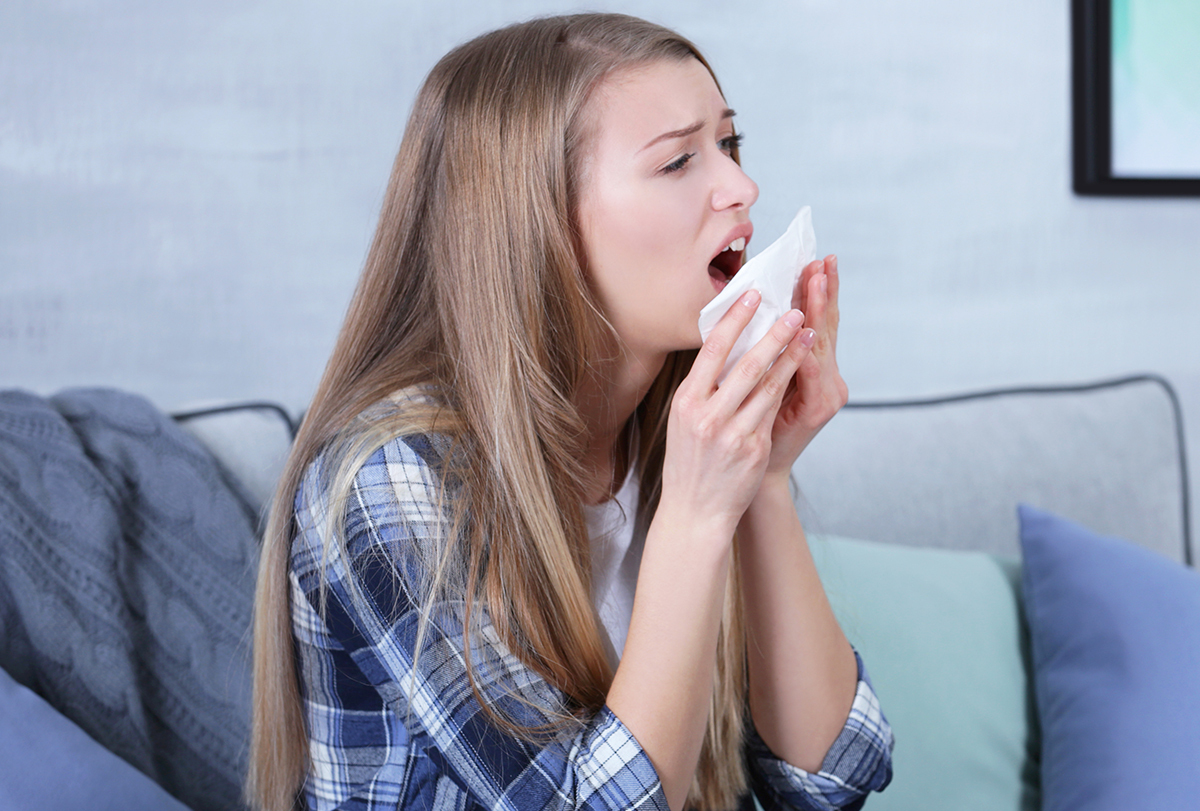In this article:
An uncontrollable burst of air that comes out forcefully and suddenly via the nose and mouth is termed as a sneeze. Medically known as sternutation, sneezing is part of the body’s natural defense.

Sneezing helps eject foreign particles in the nose, such as pollen, dust, and other minute irritants, out of the body. This mechanism protects the lungs and other organs from being affected by such particles.
How Do You Sneeze?
The entry of a foreign particle in your nose irritates the nasal lining and produces a tickling sensation in the nerve endings. This interaction generates an electric signal that informs the brain that the nose needs to be cleared. As a response, the brain sends signals to various body parts to prepare for a sneeze.
First, you take a deep breath, which expands the lungs and tightens the chest muscles. As the pressure inside the lungs increases, your eyes close, and your tongue moves to the roof of the mouth.
Finally, the air held inside the lungs is released suddenly with force. All of these happen in just a few seconds.
Causes of Sneezing

Sneezing is usually caused by the entry of particles that irritate the mucous membrane in the nose or throat. It may be discomforting but is rarely indicative of a severe problem.
Various factors that can cause sneezing include:
- Nasal sprays
- Common cold or flu
- Allergic rhinitis caused by exposure to allergens, such as pollen (hay fever), mold, dust, and dander
- Drug withdrawal
- Sudden temperature change
- Fragrances
- Certain medications
- Exposure to triggers, including air pollution, powders, dry air, spicy foods or spices such as pepper, and/or strong emotions
- Exposure of the eye to sudden bright light (known as photic sneeze syndrome) (1)
- Unusual triggers that cause psychogenic sneezing, including full stomach, sexual ideation, and/or orgasm (2)
Always cover your mouth while sneezing to maintain hygienic conditions and prevent the spread of germs.
Medical Treatment for Sneezing
Sneezing can generally be managed by avoiding allergens or triggers. However, medical intervention may be needed when the symptoms do not subside with preventive measures.
Sneezing can be managed in several ways:
- Sneezing, and other symptoms triggered by allergies can be treated with allergy medications, including antihistamines, leukotriene modifiers, topical and systemic steroids, decongestants, and/or anti-IgE.
- Allergy shots can help in preventing future allergic reactions.
- Systemic antibiotics can be used for patients with secondary bacterial infection (developed during or after a viral infection).
- Agent-specific antibiotics are used for patients with rhinitis secondary to specific bacteria.
- For fulminant fungal infections, diagnosis followed by immediate treatment is vital. (3)
- The treatment for sneezing caused by viral infections such as the common cold or flu has limited options as antibiotics remain ineffective in these cases. However, the use of antipyretics and decongestants may provide mild symptomatic relief.
Diagnostic Process

The severity and duration of the symptoms help diagnose the cause behind sneezing. These findings are aided by physical examination and patient history, which are major determiners for the diagnosis.
Laboratory tests are generally not required. However, for some cases, direct examination of the nasal cavities may be performed through:
1. Nasal endoscopy
An endoscope, which is a flexible tube with a light and a camera, is used to inspect the septum and lateral nasal wall for any deformity.
2. Anterior rhinoscopy
This test helps in examining the nasal cavities for swelling in the turbinate, nasal secretions, properties of the mucosal surface, septum position, and ulcerations. It is performed only after inspection without instruments.
Further evaluation through a sinus radiograph (X-ray) or computed tomography (CT) may also be helpful. If allergies are suspected, allergy skin testing or blood testing may be done. If infectious causes are suspected, a nasal or throat culture may be ordered by the physician.
Complications Associated With Holding Back a Sneeze

Holding back a sneeze can lead to various complications, including:
- Diaphragm injury
- Burst blood vessel in the white part of the eye
- Ruptured eardrum
- Temporarily elevated blood pressure due to rupturing of a weak blood vessel in the brain
Rarely, a held-back sneeze may also lead to:
- A brief incontinence
- A neck injury due to the sudden extension of the neck
Certain unusual medical conditions can also lead to an injury when holding back a sneeze.
When to See a Doctor
Generally, sneezing resolves on its own or through self-care measures. However, if your condition persists for more than a few days and is affecting your lifestyle, you should seek medical attention.
Final Word
Sneezing is a reflex action that occurs in all humans and is also common among animals. It plays a major role in protecting the body from foreign particles.
While it may be irritating, sneezing is rarely symptomatic of severe disease. Acquiring proper information about this involuntary phenomenon can help in diagnosing other related ailments.

- Was this article helpful?
- YES, THANKS!NOT REALLY


